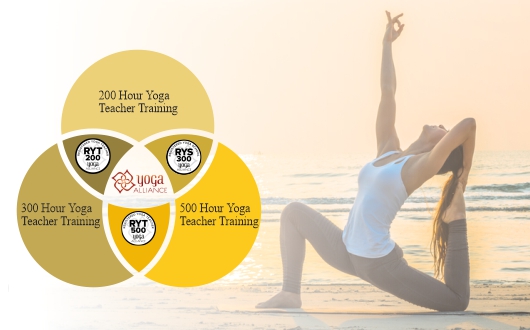Heal Sleep Disorders With Mindfulness Meditation For Sleep
If you are facing trouble falling asleep at night, know that you are not alone. More than 60 percent of adults experience symptoms of sleep disorders regularly.
For many people, falling asleep is difficult because of stress. This is because stress is known to give birth to anxiety, thereby making it hard for you to fall asleep.
Studies have found out that practicing different forms of yoga and meditation can help you sleep better because meditation is known to be a relaxation technique that can easily quieten the mind and body, and enhance inner peace. Meditation also cures the problem of insomnia and several other sleep issues.
Scroll down and read more about the different forms of meditation and how they help in improving the quality of your sleep.
How Practicing Meditation Helps You Sleep
When you start practicing meditation on a regular basis, a variety of physiological changes occur, and these changes help you fall asleep.
Research has shown that those who practice meditation, they are more likely to stay calm, relaxed, and sleep well. Sleep disorders often stem from unwanted issues of stress and anxiety, but practicing meditation improves your relaxation response. It also improves your nervous system and reduces the time you wake up while sleeping in the middle of the night.
How Different Forms of Meditation Assist You
Mindfulness Meditation
Mindfulness meditation for sleep teaches you to focus on the present. This is done by increasing your consciousness, breathing, and awareness of the body.
While practicing mindfulness meditation, if you notice a random thought or feeling, without thinking too much about it, let it pass by and do not judge yourself.
Also Read:- Yoga Teacher Training in Rishikesh
How To Practice Mindfulness Meditation
- Start by removing all your distractions from your room, including your laptop and phone.
- Lie down in a position that you feel most comfortable in.
- Slowly start focusing on your breath.
- Inhale 10 breaths, hold those 10 breaths, and then exhale them. Repeat this process 5 times.
- While inhaling you will feel your body tense. At that time, pause and relax, and then slowly exhale.
- Notice your breathing and how your body is reacting to it.
- If by any chance, one of your body parts feels tight, consciously loosen it up.
- When a thought comes to your head, let it go, and slowly focus back on your breathing.
Guided Meditation
As the name suggests, guided meditation is when a person guides you through the whole process. That person will instruct you how to breathe and relax your body or they might make you visualize things and hear sounds to help you concentrate. This technique of meditation is also known as guided imagery.
How To Practice Guided Meditation
- Pick a recording that you feel is the best for you to relax.
- Dim the lights of your room and plug your phone into a speaker.
- Start the audio and take deep breaths very slowly.
- Feel your body and mind sink while breathing deeply.
- Focus fully on the voice of the person speaking in the recording.
- If your mind starts to wander, slowly bring your attention back to the voice.
Body Scan Meditation
This particular form of meditation makes you focus on each part of your body. The main goal of body scan meditation is to make you aware of the physical sensations of your body, be it pain or relaxation. It is the act of promoting overall relaxation to the body, thereby helping you fall asleep.
Also Read:- Best Practices of Yoga For Covid 19 Prevention
How To Practice Body Scan Meditation
- Lie down in a comfortable position and remove all distractions from your room.
- Close your eyes and start breathing slowly but deeply.
- Notice the weight of your entire body on the bed or yoga mat (on whatever surface you are practicing body scan meditation).
- Shift your focus to your face – your jaw, your eyes, your facial muscles.
- In this way, move to different parts of your body and focus on them.
- If your mind wanders off to an unknown land, slowly bring it back.
- And if you feel like repeating the whole process of body scan meditation, then start from your feet and move upwards to the rest of your body.
Are There Any Side-Effects?
Usually, meditation is considered to be a low-risk practice. It is considered to be a safe form of exercise in comparison to other forms of ancient practices. But if you have a history of health issues by any chances, then yes, meditation may trigger some unwanted side effects like:
- Dizziness
- Intense Mood Swings
- Derealization
- Increased Anxiety
These side effects are really rare. However, if you are concerned that these side effects will trouble you later, it's recommended to consult your doctor in advance.
Read More:- Yoga Nidra Training



Comments
Post a Comment